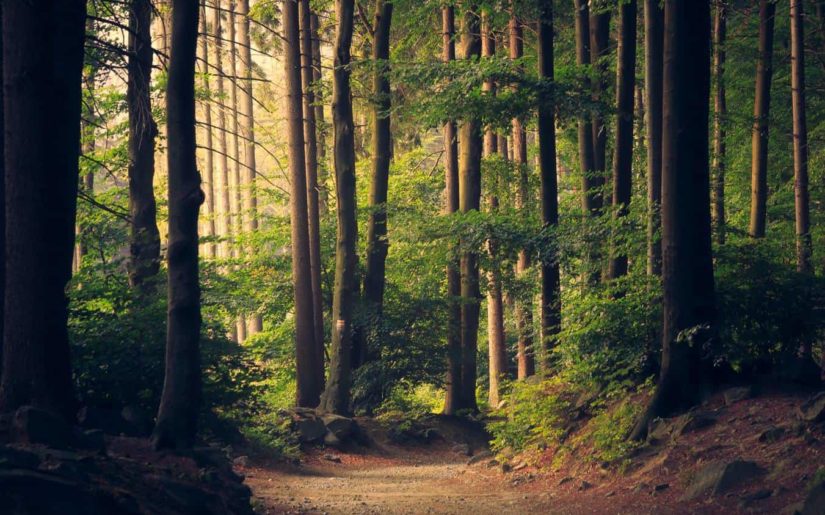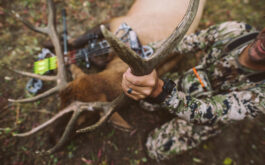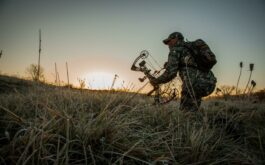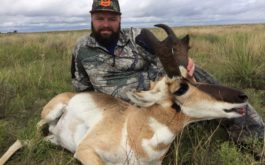Antelope
Antelope, or pronghorn are primarily restricted to the west of Kansas due to decreasing space and land. The hunting of pronghorn are restricted to three management units. They include part or all of Sherman, Thomas, Wallace, Logan, Gove, Trego, Greeley, Wichita, Scott, Lane, Ness, Hamilton, Kearny, Finney, Gray, Hodgeman, Ford, Stanton, Grant, Haskell, Morton, Stevens, Seward, Meade and Clark counties. Firearms and muzzleloader permits are limited to residents only. There are only about 170 permits that are authorized each year. If a hunter is unsuccessful in the draw, they are awarded a preference point. If you have six prefernce points, a general resident can draw a firearms permit or three-four preference points to draw a muzzleloader permit. Archery hunters may purchase pronghorn permits over the counter. Check the KDWP website for information on seasons.
Deer
There are two deer species in Kansas: the mule deer and the white-tailed deer. You will find mule deer in the western one-third of the state, primarily on the High Plains, Smoky Hills and Red Hills regions. Traveling towards the east mule deer become less abundant and you will encounter more whitetail deer. However they can typically be found statewide. Whitetail deer can be found in natural woodlands, shelterbelts, old homesteads and grasslands.
Elk
Elk in Kansas are primarily hunted on and around Ft. Riley, but individual elk or small herds have been seen in other locations around the state. Hunting elk is permitted everywhere in the state with the exception of Morton County. Only around 20 permits are given each year and they are divided among military personnel and Kansas residents.
Migratory Birds
Ducks
Kansas has around 27 species of ducks, the major portion of the resident breeding population is comprised of three types: wood ducks, blue-winged teal and mallards. These are the first to arrive during the migration period, peaking in September and early October. The next major influx of migrant ducks occurs in late October and early November. Kansas is located in an area that is crossed by some of the major migration routes of these ducks. In late October there is a an influx in Northern pintail of green-winged teal and gadwall arriving. Mallards are the last of the top five to arrive, peaking in late December, they are the most popular in the Kansas state.
Dove
There are four species of doves that are legal to hunt in Kansas, they include: mourning dove, Eurasian collared-dove, ringed turtle-dove, and white-winged dove. Pigeons can be shot year round as they are considered a pest species. To differentiate the types of doves, mourning doves have a pointed tail while the others’ are rounded. White-winged doves are the largest and have a large white wing patch. Mourning doves are one of the most common bird species in North America.
Other migratory birds that can be hunted in Kansas include: crows, geese, rail, sandhill crane, snipe, and teal.
Upland Birds
Pheasant
The ring-necked pheasant is one of the most popular game birds in the state of Kansas. The estimated annual harvest range from a low of 425,000 to a high of 824,000 cocks since 1990. The northern half of the Kansas pheasant range is typically the most abundant. Check the KDWP website for more information on Regions, seasons and bag limits.
Bobwhite Quail
Bobwhite quail are the number two most popular upland bird in Kansas. They are found statewide but generally higher numbers are found in the east. During years where the weather is particularly agreeable, the Red Hills region is an ideal place to hunt for quail. It provides picturesque scenery. In the far southwestern corner of Kansas you will find different types of quail such as: scaled, and blue.
Greater Prairie Chicken
There are two species of prairie grouse in Kansas which are the greater prairie chicken (which is the most abundant) and the lesser prairie chicken. Lesser prairie chickens are currently on the endangered species list and are forbidden to hunt in the southwest unit (refer to map). There are two forms of prairie chicken hunting that occurs in Kansas. In the eastern half of the state there is an early season that allows hunters with dogs to take advantage of the greaters. The second is during the regular season where hunters can position themselves at the margin of the field closest to the roosting area.
Turkey
The Rio Grande subspecies is the most abundant in the western two-thirds of Kansas. In the north-central region the Hybrid Rio Grande/Eastern birds are found and the Eastern subspecies are common in the northeast and far southeast regions.
Furbearers
A “furbearer” is a term traditionally used by the fur industry to describe an animal with fur. It must also have commercial value and can be sold for money. The different types of furbearers in Kansas are: beaver, bobcat, badger, coyote, gray fox, mink, muskrat, otter, raccoon, red fox, striped skunk, swift foa and Virginia opossum.
Beaver
Beavers have been harvested for their pelts since the 1700’s. Today, they continue to be taken due to the damage they inflict through flooding and tree-cutting activities. Beavers can only be taken by way of trapping and their harvest season is longer than that of other furbearers.
Coyote
Coyotes are typically ranked second or third in total value of pelts harvested in Kansas. Foothold trapping is the most common and effective technique for taking coyotes due to their cunning natures.
Small Game
There are three types of small game animals in Kansas that hunters can take. They include: cottontail rabbits, gray squirrels and jack rabbits. For more information on seasons, regulations and range maps, visit the KDWP website.









